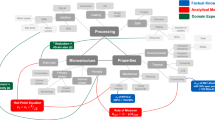Abstract
The development of computer based systems supporting the creation and the evolution of core knowledge is challenging, and involves the development of knowledge models dynamically tackling with well-structured notions, formal models, heuristic, tacit and not formalized knowledge, and experience. The main aim of this work is to present the experience of modeling and the implementation of a knowledge based system (P-Race) designed and developed to support the chemical formulation of rubber compounds of tire tread, in order to take part in motor racing. Because of the different competence involved in the decision making process (the compound designer - who owns a large part of the chemical core knowledge of a tire company- and the race engineer), multiple knowledge epresentations have been adopted, and integrated into a unique Case-Based Reasoning (CBR) computational framework. Moreover, a dedicated formalism for the representation of model-based knowledge for chemical formulation (called Abstract Compounds Machine - ACM) has been created. It allows the core knowledge about rubber compounds to be explicitly represented, computed and integrated in the CBR architecture.
Access this chapter
Tax calculation will be finalised at checkout
Purchases are for personal use only
Preview
Unable to display preview. Download preview PDF.
Similar content being viewed by others
References
Aamodt, A. and Plaza, E., 1994, Case-based reasoning: Foundational issues, methodological variations, and system approaches,Artificial Intelligence Communications7,1:39–59.
Aha, D.W. and Munoz Avila, H., eds., 1999,Exploring Synergies of Knowledge Management and Case-Based Reasoning, AAAI Workshop, Technical Report WS-99-19.
Aha, D.W., and Weber, R., eds., 2000,Intelligent Lessons Learned Systems: Papers from the AAAI Workshop, Technical Report WS-00-03, AAAI Press, Menlo Park, CA.
Bandini, S., and Manzoni, S., 2000, A knowledge-based system for the design of rubber compounds in motor racing, in:Proceedings of the 14th European Conference on Artificial Intelligence, W. Horn, ed., IOS Press, Amsterdam, pp. 691–695.
Bandini, S. and Manzoni, S., 2001, Application of fuzzy indexing and retrieval in case based reasoning for design,16 th ACM Symposium on Applied Computing, ACM Press, New York, pp. 426–466.
Borner, K., 1998, CBR for design, in:Case-Based Reasoning Technology, M. Lenz, B. Bartsch-Sporl, H. Burkhard, and S. Wess, eds., LNCS/LNAI 1400, Springer, Berlin, pp. 201–233.
Cheetham, W. and Graf, J., 1997, Case-based reasoning in color matching, in:Case-Based Reasoning Research and Development, D.B. Leake, and E. Plaza, eds., Proceedings 2ndInternational Conference on Case-Based Reasoning, Springer, Berlin, pp. 1–12.
Craw, S., Wiratunga, N., and Rowe, R., 1998, Case-based design for tablet formulation, in:Proceedings of the 4 th European Workshop on Case-Based Reasoning, B. Smyth and P. Cunningham, eds., Springer, Berlin, pp. 358–369.
Craw, S., Jarmulak, J., and Rowe, R., 2001, Learning and applying case-based adaptation knowledge, in:Proceedings of the 4 th International Conference on Case-Based Reasoning, D.W. Aha, I. Watson, and Q. Yang, eds., Springer, Berlin, pp. 131–145.
Davenport, T.H. and Prusak, L., 1989,Working Knowledge, Harvard Business School Press, Boston.
Hansen, B.K. and Riordan, D., 1998, Fuzzy case-based prediction of ceiling and visibility, in:Proceedings of the I st Conference on Artificial Intelligence of the American Meteorological Society, pp. 118–123.
Jaczynski, M. and Trousse, B., 1994, Fuzzy logic for the retrieval step of a case-based reasoned in:Proceedings Second European Conference on Case-Based Reasoning, LNAI 984, J. Haton, P. Keane, and M. Manago, Springer Verlag, Berlin, pp. 313–322.
Kolodner, J., 1993,Case-Based Reasoning, Morgan Kaufmann, San Mateo.
Liebowitz, J., ed., 1999,Knowledge Management Handbook, CRC Press, Boca Raton.
Magnani, L., N.J. Nersessian, P. Thagard, eds., 1999,Model-Based Reasoning in Scientific Discovery, Kluwer Academic/Plenum Publishers, New York.
Main, J., Dillon, T.S., and Khosla, R., 1996, Use of fuzzy feature vectors and neural networks for case retrieval in case-based systems, in:Proceedings of the Biennal Conference of the North American Fuzzy Information Processing Society, IEEE, New York, 438–443.
Maher, M.L., Balachandran, M., and Zhang, D.M., 1995,Case-Based Reasoning in Design, Laurence Erlbaum, Hove.
Prahalad, C.K. and Hamel, G., 2000, The core competence of the corporation, in:Strategic Learning in Knowledge Economy: Individual, Collective and Organizational Learning Process, R.L. Cross and S.B. Israelit, eds., Butterworth Heinemann, Boston, pp. 3–22.
Pine, B. J. and Gilmore, J.H., 1999,The Experience Economy, Harvard Business School Press, Boston.
Seely Brown, J. and Duguid, P., 2000, Organizational learning and communities-of-practice: toward a unified view of working, learning and innovation, in:Strategic Learning in Knowledge Economy: Individual, Collective and Organizational Learning Process, R.L. Cross and S.B. Israelit, eds., Butterworth Heinemann, Boston, pp. 143–166.
Slade, S., 1991, Case-based reasoning: a research paradigm,AI Magazine, Vol. 12, Spring 1991, 1:42–55.
Weber-Lee, R., Barcia, R.M., and Khator, S.K., 1995, Case-based reasoning for cash flow forecasting using fuzzy retrieval, in:Case-Based Reasoning Research and Development, M. Veloso and A. Aamodt, eds.,First International Conference on Case-Based Reasoning, Sesimbra, Springer Verlag, Berlin, pp. 510–519.
Zadeh, L.A., 1996, Fuzzy Logic = Computing with Words,IEEE Transactions on Fuzzy Sys- tems, Vol. 4, 2:103–111.
Author information
Authors and Affiliations
Editor information
Editors and Affiliations
Rights and permissions
Copyright information
© 2002 Springer Science+Business Media New York
About this chapter
Cite this chapter
Bandini, S., Manzoni, S. (2002). Modeling Core Knowledge and Practices in a Computational Approach to Innovation Process. In: Magnani, L., Nersessian, N.J. (eds) Model-Based Reasoning. Springer, New York, NY. https://doi.org/10.1007/978-1-4615-0605-8_21
Download citation
DOI: https://doi.org/10.1007/978-1-4615-0605-8_21
Publisher Name: Springer, New York, NY
Print ISBN: 978-1-4613-5154-2
Online ISBN: 978-1-4615-0605-8
eBook Packages: Springer Book Archive




